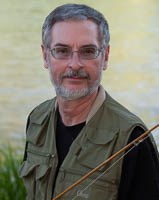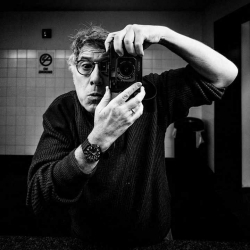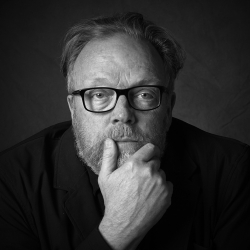Home > Topics > Site and Board Matters > New Article Announcements & Discussions > Rad Drew: Editing Workflows for Topaz Studio 2 and Luminar 4
Rad Drew: Editing Workflows for Topaz Studio 2 and Luminar 4
-
AuthorTopic: Rad Drew: Editing Workflows for Topaz Studio 2 and Luminar 4 Read 15631 Times
-
New Article Announcements & Discussionson: August 12, 2020 at 8:40 pm
I don’t use Topaz or Luminar (I own it) , and probably won’t start. Nevertheless, you images are excellent and show great skill in a number of photographic settings. At the end of the day, the software is secondary. Talented people can get to the same result no matter what software they choose to use. Thanks for posting the images and the article.
Jack Siegel
Jack B. Siegel
Photographer, Attorney, and WriterRe: Rad Drew: Editing Workflows for Topaz Studio 2 and Luminar 4Reply #1 on: August 12, 2020 at 8:44 pmYes and no. Some effects are much more easily controlled and accomplished using one application versus another. They all have their various and differing strengths in this regard. And there are some features in some applications that you simply don’t find in others that break new ground in image portrayal.
Re: Rad Drew: Editing Workflows for Topaz Studio 2 and Luminar 4Reply #2 on: August 12, 2020 at 8:48 pmAlso, wondering whether you saw the other thread on Luminar 4 – may be worthwhile reading.
Re: Rad Drew: Editing Workflows for Topaz Studio 2 and Luminar 4Reply #3 on: August 13, 2020 at 9:59 amFrom my experience, both of these programs do an excellent job and I can produce excellent images using either. All the programs I use are like the tools of any craftsman. First, you learn the tool. then use the right tool for the job. I find that CApture One does 90% of what I need. then the extra 10% may come from a third party program. My toolbox includes OnOne, NIK, Luminar, Topaz. I have Aurora and photomatix for HDR needs (which is rare these days). I also use Affinity and Photoshop.
God, what has happened to me. I am a recovering GAS addict and now I have app addiction. at least it is harmless and fun.
Kevin Raber
Owner and Publisher of photoPXLRe: Rad Drew: Editing Workflows for Topaz Studio 2 and Luminar 4Reply #4 on: August 13, 2020 at 10:03 am……and probably keeps you busier than you need to be! 🙂
Re: Rad Drew: Editing Workflows for Topaz Studio 2 and Luminar 4Reply #5 on: August 13, 2020 at 11:02 amIt is true that plug-ins have their differences. For example, one may do noise reduction better than another. As another example, it might be faster to use a plug-in to obtain a certain film emulation than creating it in Photoshop. These examples explain why a particular photographer chooses a particular plug-in or Photoshop. However, as someone who has experimented with Nik, DxO, Boris Optics, and Luminar, I see far more similarities than differences when comparing one suite of effects to another. I recently purchased Boris Optics new plug-in for photographers. As I went through the panels of options, I noticed how many of the filters could be found in Nik’s Color and Analogue Efx plug-ins. People may debate which is easier to use or whether one filter is better implemented in Boris than Nik, but for the most part, you can get to the same place using either package.
As with camera equipment, I don’t have much patience with these debates. A talented photographer or post-capture editor can produce compelling images with any camera or software. Photographers worry about all sorts of technical details, but at the end of the day, I’ve never had someone look at one of my images and say, “You should spent more money on a lens because the corners are soft,” or “You must have used Lightroom rather than CaptureOne.”
Along those lines. I spent three three-day weekends in Amsterdam at a nine-month portfolio review/story telling workshop. There were ten participants, and throughout the nine days, we had a number of magazine editors, internationally acclaimed photojournalists, and museum curators review our work. Not once did anyone ask or comment on the equipment that was used or whether other equipment or software would have produced more compelling images.
So I stand by my original statement: There are far more similarities than differences in these software packages. In the hands of a talented person, any of the packages will produce compelling images. In the hands of the not-so-talented, the user will produce images with the same overused effects and looks.
Jack B. Siegel
Jack B. Siegel
Photographer, Attorney, and WriterRe: Rad Drew: Editing Workflows for Topaz Studio 2 and Luminar 4Reply #6 on: August 13, 2020 at 11:07 amIn principle I agree with you, except you are missing the point about comparative ease of workflow and the differing amounts of time, skill and effort it can take to produce similar effects using the different packages. For people doing a large amount of image editing these considerations can be meaningful in respect of what they decide to use.
Re: Rad Drew: Editing Workflows for Topaz Studio 2 and Luminar 4Reply #7 on: August 18, 2020 at 1:39 pmI was pretty impressed with some of Luminar 4’s capabilities, until I discovered two problems. The first is that it is quite slow, especially in the Library mode, where when switching between images it takes 6-8 seconds for an image to come into focus. This is on two separate up-to-date and highly spec’d computers, and the company’s forums are full of complaints about this. Part of the problem is that it does not employ GPU acceleration, though the company says they are working on it and hope to have that functioning sometime in the indefinite future.
Second, and more importantly to me, Luminar 4 (and apparently Luminar 3 before it) does not employ proper color management. Behind the scenes it converts all images to its working space, sRGB. Nowhere in its documentation does it state this, but company representatives have confirmed it to users of their forums. Even though you can export out a Luminar 4 processed file in Adobe RGB or ProPhoto RGB, that doesn’t help if it has already discarded data when it converted to sRGB upon loading. Moreover, Luminar 4 does not properly respect monitor profiles. So if you edit a photo within Luminar 4, save it, then view it in a properly color managed application like Lightroom or Photoshop, it will look different–especially on wide gamut monitors. This has been complained about on Skylum forums for years. A month ago, a Skylum representative confirmed that it is something they want to fix, but have no timeline for doing so. Monitor Color Management for Windows is still missing
So I won’t be using it any further until these issues are addressed.
Re: Rad Drew: Editing Workflows for Topaz Studio 2 and Luminar 4Reply #8 on: August 18, 2020 at 10:46 pmI think these are decisive drawbacks and thank you for bringing them to our attention. Will save lots of people who read this a lot of time and some money.
Re: Rad Drew: Editing Workflows for Topaz Studio 2 and Luminar 4Reply #9 on: August 19, 2020 at 10:57 amI wonder if it is the same for MAC? I’, going to take an image in 16 bit tiff and run it through Luminar and bring it out and see how they compare.
Kevin Raber
Owner and Publisher of photoPXLRe: Rad Drew: Editing Workflows for Topaz Studio 2 and Luminar 4Reply #10 on: August 19, 2020 at 11:07 amKevin, I will be interested in learning about your results. I believe members of the Skylum forums have said that it occurs on both platforms.
EDIT: Well, I take back what I said about the Mac. Doing a search in their Mac forum, I see far fewer complaints about color management.
-
This reply was modified 3 years, 11 months ago by
 Arlen Thomason.
Arlen Thomason.
-
This reply was modified 3 years, 11 months ago by
 Arlen Thomason.
Arlen Thomason.
Re: Rad Drew: Editing Workflows for Topaz Studio 2 and Luminar 4Reply #11 on: August 19, 2020 at 5:31 pmNow for some good news. I tested whether Luminar 4 converts everything to an sRGB working space upon import, as reported in the company’s forums, and it does not. For this test I used Andrew Rodney’s Gamut Test File, which contains a wide range of colors that can be displayed on a wide gamut monitor, but much of which is clipped if converted to sRGB. The starting file is in ProPhoto RGB. I opened it into Luminar 4, made no changes, then exported it by choosing ProPhoto as the color space. When viewed in Photoshop on my wide gamut NEC monitor, the original and exported file colors were identical. So whatever the working space in Luminar 4 may be, it is wide, and not a narrower space like sRGB.
The problem with not properly respecting monitor profiles, at least on Windows computers, remains.
-
This reply was modified 3 years, 11 months ago by
-
AuthorPosts
- You must be logged in to reply to this topic.





